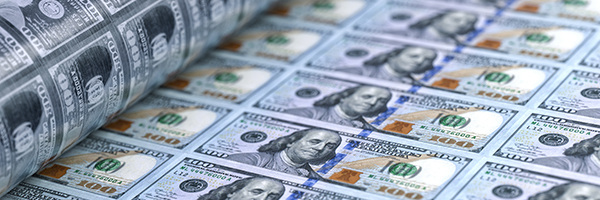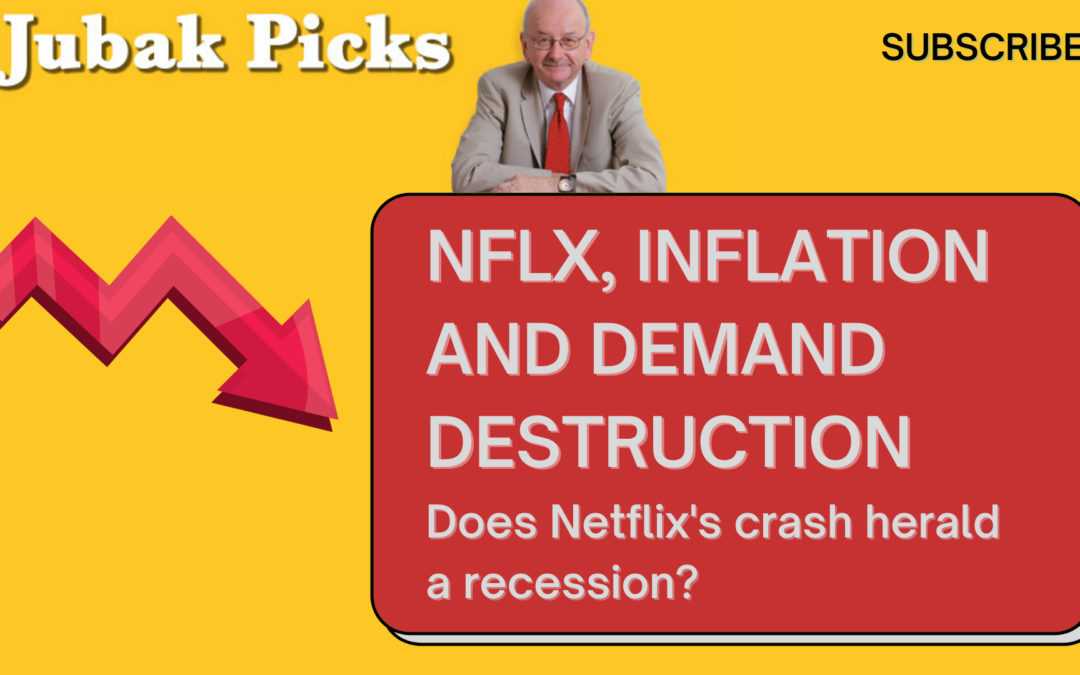
May 5, 2022 | AMD, AMZN, Daily JAM, Videos |
My one-hundredth-and-thirtieth YouTube video “Market gives Fed a razzberry” went up today. Yesterday, the Fed announced that it would raise rates by 50 basis points but that it was not looking to raise by 75 at the June or July meetings. In response, the market had a huge rally, especially in tech stocks, as it had b been widely assumed that those meetings would see the larger 75 basis-point increase. All that has changed today, when upon second thought the market no longer likes this news, with the S&P 500 and NASDAQ Composite giving back all the gains they made yesterday plus a little more. I look at a few specific stocks, like Amazon and Advanced Micro Devices, and talk about why I think the selloff in tech stocks is going to continue.

May 4, 2022 | Daily JAM, Morning Briefing |
Today the Federal Reserve’s Open Market Committee announced that the central bank would raise its benchmark interest rate by 50 basis points. Stocks rallied strongly after Federal Reserve chair seemed to take off the table the 75 basis point increase in June and July that financial markets were convinced was in the cards.

May 2, 2022 | Daily JAM, Morning Briefing, Short Term |
Economists surveyed by Bloomberg project the Federal Reserve will hike its benchmark short-term interest rate by 50 basis points on Wednesday in an effort to damp inflation. And bond traders have just decided that the U.S.central bank will raise rates by 75 basis points at its June 15 meeting. The CME Fed Watch Tool, which uses prices in the Fed Funds Futures market to calculate odds of a fed move, puts the odds of a 50 basis point increase from the current 0.25% to 0.50% to 0.50 to 0.75% at 99.8%. That tool puts the odds of a 75 basis point increase air the June 15 meeting at 87%. That’s up from odds for just 18% on April 1. Bond prices are down and bond yields are up today.

April 30, 2022 | Weekend JAM |
The Federal Reserve will meet on Wednesday, May 4, and raise interest rates. Fed officials, including Fed chair Jerome Powell have spent the last couple of weeks state and restating the need for an interest rate increase to combat inflation running at 8.5% (according to the Consumer Price Index.) A failure to increase interest rates would be shocking after all those “hints.” The only real questions are How big an increase? And how will stocks respond?

April 27, 2022 | Daily JAM, Morning Briefing |
Data, data everywhere in the next two days. From inflation to GDP. To begin with the Bureau of Economic Analysis is scheduled to report first quarter U.S. GDP growth on April 28. Economists expect to see that the economy has grown at an annualized rate of just 1.1% in the quarter. That would be a huge drop from the 6.9% rate in the fourth quarter of 2021. But they warn that the headline number will be extremely misleading.

April 22, 2022 | Daily JAM, Morning Briefing |
The financial markets have moved from pricing in 50 basis point increases in the Federal Reserve’s target interest rate at the May 4 and June 15 meetings to considering the possibility that the Fed will increase rates by 75 basis points in June and July. A 25 basis point increase is “business-as-usual” for a Fed tightening. 50 basis points at a pop (it takes 100 basis points to make up 1 percentage point) would be very aggressive, but comments from Fed chair Jerome Powell this week certainly put a move of that size on the table.A pair of 50 basis point increases would be the sharpest move by the Fed since January 1982 when the Volcker Fed was fighting to control double-digit inflation

April 20, 2022 | Daily JAM, Mid Term, Videos, You Might Have Missed |
My one-hundredth-and-twenty-third YouTube video “Netflix, Inflation, and Demand Destruction” went up today. Today I’m covering Netflix’s (NFLX) crash after releasing its subscriber numbers showing the loss of 200K subscribers for the quarter and predicting a loss of ten times that many for next quarter. I think we are starting to see signs of demand destruction due to ongoing inflation. That demand destruction will only get more severe as the Fed continues to raise rates.

April 8, 2022 | Daily JAM, Morning Briefing |
Economists surveyed by Bloomberg now say that consumer price index (CPI) inflation will average 5.7% in the final three months of 2022. That’s up from a forecast of 4.5% a month ago. (The March CPI report is due on Tuesday, April 12.) These economists also upped the chances of a recession within the next 12 months to 27.5% from 20% in their forecast a month ago. There are two bad pieces of news in that survey for investors.

April 6, 2022 | Daily JAM, Short Term |
Minutes from the March meeting of the Federal Reserve released Wednesday, April 6, showed that only Russia’s invasion of Ukraine kept the central bank from raising benchmark interest rates by 50 basis points instead the 25 basis-point increase the Fed actually instituted at that meeting. “Many” Fed officials viewed one or more half-point increases as appropriate going forward if price pressures fail to moderate. The minutes showed the Fed proposing to shrink its balance sheet at a maximum pace of $60 billion in Treasuries and $35 billion in mortgage-backed securities each month. That’s in line with market expectations

April 6, 2022 | Daily JAM, Morning Briefing |
Money markets are pricing in another 225 basis points of increases to the Federal Reserve’s benchmark interest rate by the end of 2022. That’s on top of the 25 basis point increases already delivered in March. The Fed hasn’t done that much tightening–a total of 2.5 percentage points–in one year since 1994.

April 5, 2022 | Daily JAM, Morning Briefing, Short Term, You Might Have Missed |
In remarks prepared for a Tuesday speech to the Minneapolis Federal Reserve Bank Federal Reserve Governor Lael Brainard said “Currently, inflation is much too high and is subject to upside risks. The committee is prepared to take stronger action if indicators of inflation and inflation expectations indicate that such action is warranted.” And she called for reducing the Fed’s balance sheet as early as next month. The bond market certainly heard Brainard’s remarks as a promise of more action faster.

March 31, 2022 | Uncategorized |
Inflation as measured by the Personal Consumption Expenditures Index, the Fed’s preferred inflation measure, rose by 6.4% in the year through February, the government reported today. That’s the fastest inflation rate on this scale since 1982. PCE inflation ran at an annual rate of 6.1% in January. The core index climbed at a 5.4% rate after stripping out food and fuel costs. In January the core PCE ran at an annual 5.2% rate.










